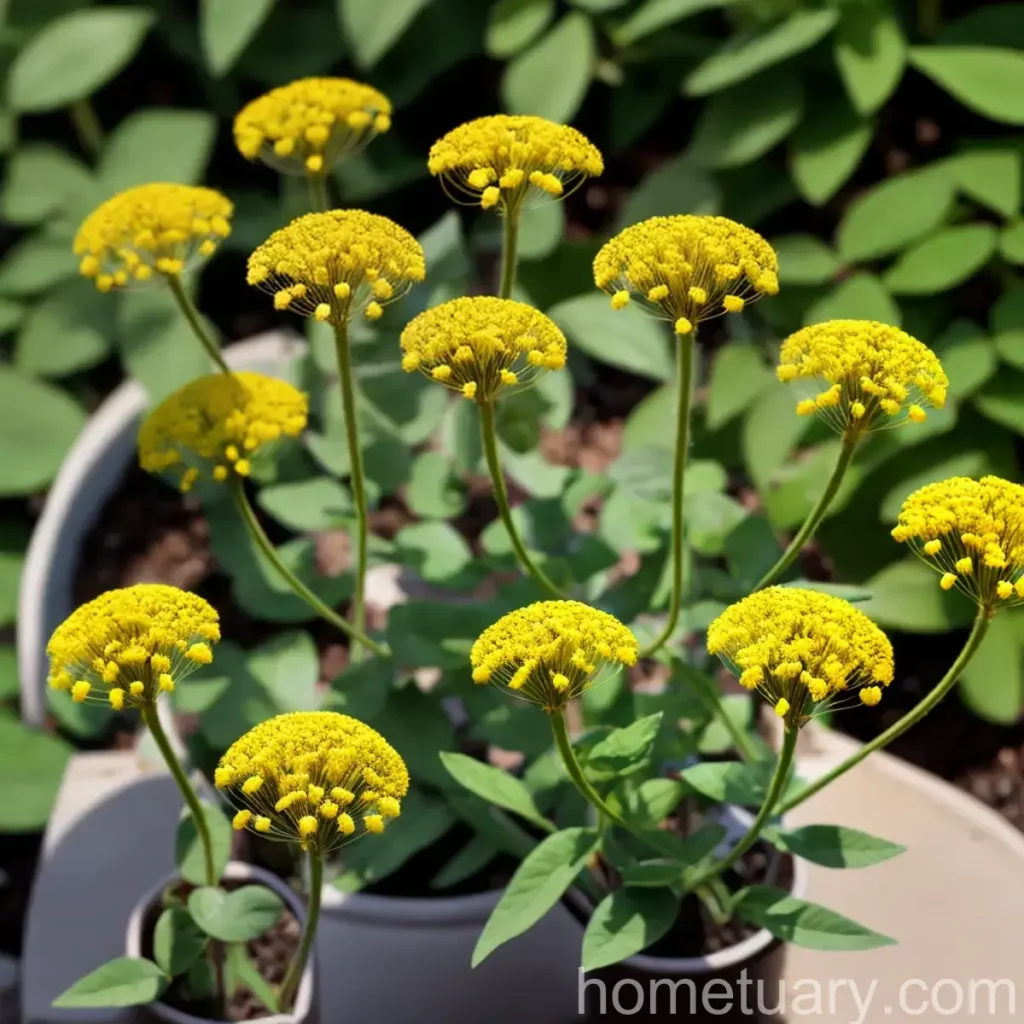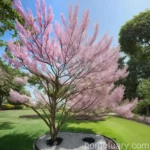Bladder Senna (Colutea x media): A Complete Guide
Plants have been an integral part of our lives. Whether they are used for their aesthetic value, as a source of food, or for their medicinal properties, the importance of plants cannot be overstated. One such plant that holds significance both in traditional medicine and landscaping is the bladder senna (Colutea x media). In this comprehensive guide, we will delve into the various aspects of bladder senna, from its cultivation and care to its ecological significance and uses in traditional medicine.
What is bladder senna (Colutea x media)?
Bladder senna, scientifically known as Colutea x media, is a deciduous shrub that belongs to the Fabaceae family. This plant is a hybrid of Colutea arborescens and Colutea orientalis, resulting in its unique characteristics and properties. The name “bladder senna” is derived from the inflated bladder-like fruits that develop after the flowering period, which add to the plant’s visual appeal.
Plant Description
- Common Names: Bladder senna, Colutea x media
- Plant Family: Fabaceae
- Native Range: Mediterranean region
- Plant Height: 6-10 feet
- Plant Width: 6-10 feet
- Flower Color: Yellow
Bladder senna is characterized by its pinnate leaves and vibrant yellow flowers, which bloom during the summer months. The plant’s overall structure and appearance make it a desirable addition to gardens and landscapes, adding a touch of elegance and color.
Key Takeaways – Bladder Senna (Colutea x media)
Before we dive deeper into the specifics of bladder senna, let’s take a quick look at the key takeaways for this plant.
- Medicinal Uses in Traditional Medicine: Bladder senna has been traditionally used for its medicinal properties, offering a range of benefits in herbal medicine.
- Landscaping Gem: Its ornamental value makes it a popular choice for landscaping, adding visual interest and attracting wildlife.
- Drought-Tolerant: Bladder senna exhibits excellent drought tolerance, making it suitable for arid and dry climates.
- Attractive Foliage and Fruits: The pinnate leaves and bladder-like fruits contribute to its aesthetic appeal throughout the seasons.
Now that we have a brief understanding of bladder senna, let’s explore the various aspects involved in its cultivation, care, and usage.
Culture
Cultivating bladder senna requires an understanding of its cultural requirements, including the optimal conditions for growth and development. From sunlight exposure to soil preferences, getting the culture right is crucial for the plant’s well-being.
Uses
Bladder senna serves multiple purposes, making it a versatile addition to gardens and landscapes. Its uses encompass both practical applications and aesthetic enhancements.
-
Medicinal Uses: Bladder senna has a history of use in traditional herbal medicine for various health conditions.
-
Landscaping: It is valued for its ornamental features and wildlife-attracting qualities, making it a popular choice in landscaping designs.
Water
Understanding the water needs of bladder senna is essential for maintaining its health and vigor. While it exhibits drought tolerance, adequate watering is crucial during certain growth stages.
- Watering Requirements: Moderate water needs; well-draining soil to prevent waterlogging
- Established Plant Care: Once established, bladder senna can withstand periods of drought but benefits from occasional deep watering during prolonged dry spells.
Sunlight
As with many plants, sunlight plays a vital role in the growth and flowering of bladder senna. Understanding its sunlight requirements is essential for optimizing its performance.
- Sun Exposure: Full sun to partial shade
- Optimal Growth: Full sun exposure promotes abundant flowering and overall robust growth.
Fertilizer
Providing the right nutrients is key to maintaining the health and vigor of bladder senna. Understanding its fertilizer requirements is essential for promoting lush foliage and prolific flowering.
- Fertilizer Type: Balanced, slow-release fertilizer
- Application Time: Apply in spring before new growth appears
- Fertilization Frequency: Once a year for established plants
Soil
The soil composition and quality directly impact the plant’s ability to thrive. Understanding bladder senna’s soil preferences is crucial for creating an optimal growing environment.
- Soil Type: Well-draining, sandy loam
- pH Range: Slightly acidic to neutral (pH 6.0-7.0)
- Soil Amendments: Organic matter can be incorporated into the soil during planting to improve overall soil structure and fertility.
Pruning
Pruning is an essential aspect of bladder senna care, contributing to healthy growth, improved flowering, and overall plant aesthetics. Understanding the principles of pruning aids in maximizing the plant’s potential.
Pruning Time
Knowing when to prune bladder senna is crucial for maintaining its shape, removing dead or damaged growth, and promoting new flowering wood.
- Pruning Time: Late winter or early spring before new growth emerges
- Flower Removal: Remove spent flowers to encourage additional blooming
Pruning Techniques
Applying the correct pruning techniques ensures that bladder senna maintains its desired form while promoting new growth and ensuring overall plant health.
- Deadheading: Removing spent flowers
- Thinning: Removing old or congested stems to improve air circulation and light penetration
- Shape Maintenance: Prune to maintain the desired shape and size
Propagation
The ability to propagate bladder senna through various methods offers opportunities to expand its presence in gardens and landscapes. Understanding the propagation techniques is essential for successfully multiplying the plant.
Propagation Methods
Bladder senna can be propagated through several methods, including seeds and vegetative propagation, offering flexibility in expanding its numbers.
- Seed Propagation: Sow seeds in a well-draining medium in spring or autumn
- Softwood Cuttings: Take softwood cuttings in early summer and propagate them in a suitable rooting medium
- Layering: Air layering or simple layering can be employed as propagation techniques
Container Popularity
The versatility of bladder senna extends to its suitability for container cultivation, offering a space-saving and portable option for growing this charming shrub.
- Container Use: Suitable for large containers, providing ample room for root growth
- Cultural Considerations: Ensure adequate drainage, appropriate potting mix, and regular watering when grown in containers
Common Diseases
While bladder senna is relatively resilient, it is important to be aware of potential diseases that may affect the plant. Identifying and addressing these diseases promptly is crucial for maintaining its health.
Disease Diagnosis
Understanding the symptoms and signs of common diseases aids in their timely identification and implementation of appropriate remedial measures.
- Powdery Mildew: White powdery growth on leaves; ensure good air circulation and consider fungicidal treatments if necessary
- Rust: Yellow spots on leaves with rusty spores; prune affected parts and ensure proper sanitation
Common Pests
Though bladder senna is not highly susceptible to pest infestations, it may still encounter some common pests. Recognizing these pests and employing suitable control measures is essential for safeguarding the plant’s well-being.
- Spider Mites: Fine webbing and stippling on leaves; ensure adequate humidity and consider insecticidal soap applications if needed
- Aphids: Colonies of small, soft-bodied insects on tender new growth; physically remove or use insecticidal soaps for control
Botanist’s Tips
To ensure successful cultivation and care of bladder senna, it is beneficial to consider tips from experienced botanists. These insights provide valuable guidance for maximizing the plant’s potential.
- Prune Regularly: Regular pruning promotes a bushy and compact growth habit while encouraging profuse flowering.
- Monitor Moisture Levels: While the plant exhibits drought tolerance, consistent moisture is essential during the establishment phase and prolonged dry periods.
Fun Facts
Uncovering interesting and unique aspects of bladder senna adds to the fascination surrounding this plant. Here are some fun facts that shed light on the captivating nature of bladder senna:
- The inflated, bladder-like fruits of bladder senna not only add visual interest to the plant but also serve as a food source for certain wildlife species.
- Bladder senna has been used in traditional herbal medicine for its diuretic and astringent properties, with various parts of the plant being utilized in remedies.
Links to External Resources
For further exploration of bladder senna and related topics, the following external resources provide valuable information and insights:
- The Royal Horticultural Society – Colutea x media
- USDA Plants Database – Colutea x media
- Missouri Botanical Garden – Colutea x media
In conclusion, bladder senna (Colutea x media) stands out as a versatile and valuable plant, offering ornamental beauty, ecological significance, and traditional medicinal uses. By understanding its cultural requirements, care practices, and potential uses, we can fully appreciate the charm and utility of this remarkable shrub. Whether adorning a garden with its vibrant flowers or contributing to herbal remedies, bladder senna continues to captivate and enrich our lives in various ways.















